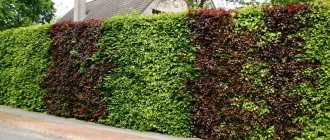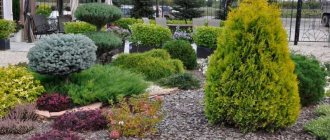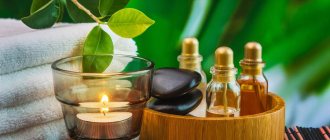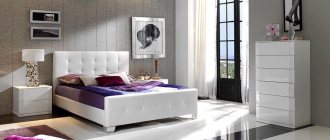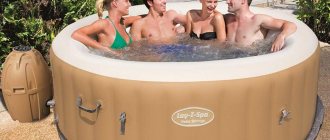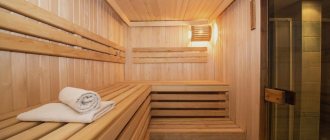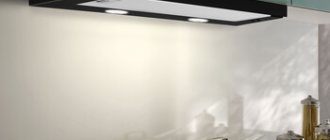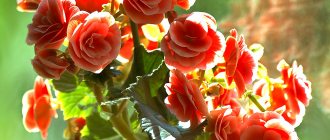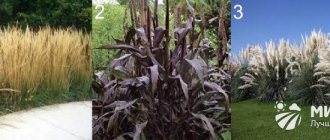What is a phytolamp for plants
Plants require sufficient light for vegetative growth and the production of flowers, fruits and seeds. Each of these stages requires lighting with different characteristics. The sun's rays contain a full spectrum of radiation, but at home, in greenhouses and greenhouses, the lack of light energy must be compensated for by artificial lighting.
A phytolamp for plants is a special light source that emits the spectrum necessary for the growth and development of green mass, the composition closest to natural.
Review of the best models
The production of phytolamps does not stand still. New and improved models are appearing. Among the well-known companies producing phytolamps are Paulmann, Secret Jardin, Philips, LED. Many models are offered by Chinese manufacturers. The light sources they produce are reliable and last a long time.
Among Russian companies, LED lamps are produced by Fitosvet, Focus LLC, and Ecolight. The companies' devices can be used to equip greenhouses and install them in greenhouses. In addition to providing high-quality lighting, such devices create an optimal microclimate in the room.
Manufacturers of flower lamps are concerned about increasing the power of their devices. So now they produce lamps with a power of up to five watts, and complex lamps with a power of up to 10-30. You can purchase phytolamps in specialized stores or order them on the websites of lighting device manufacturers.
When choosing a lamp model for your green pets, they rely on the number of plants that need high-quality lighting.
Among the popular devices for improving the illumination of plants on shelves and window sills is the Grow Panel. It contains blue and red LEDs in equal quantities. The lamp is light and reliable; it is suspended above flowers located on an area of ten square meters. The panel has convenient fasteners and plugs into a 220 Volt outlet.
To illuminate plants on an area of 0.4 square meters, Economy LED lamps with a power of 2-4 Watts are suitable. They are convenient to place above the pots of indoor plants. A linear lamp a meter or more long illuminates containers with flowers on a windowsill or shelf. The MegaLux device with a power of 14-16 watts will last a long time. By installing it above the plants in winter, you will get indoor flowers that are strong and develop well. They note the long service life of the lighting device, its safety and reliability.
How to choose a phytolamp
The optimal values for plants are wavelengths in the blue spectrum of 420-460 nm and in the red spectrum of 630-670 nm. The spectrogram on the lamp packaging shows the peak values; when selecting a lamp, this indicator is checked first.
The choice of shape depends on how much area needs to be illuminated. For spot lighting, plinth phytolamps are suitable; for shelves and window sills, it is more effective to choose a linear phytolamp.
The type of connection depends on where the device will be installed and determines ease of use. There are mobile options - battery-powered phytolamps, and stationary ones - base lamps, ready-made lamps with standard 220 V power supply, connected via a USB adapter or switchgear.
The durability of the luminaires is determined by the presence of built-in cooling radiators. They also take into account the ease of operation and maintenance and economic factors - feasibility, price of a phytolamp for plants and energy consumption.
Top phytolamps will allow you to evaluate the advantages and disadvantages of each type.
Types of phytolamps
Luminescent
Conventional fluorescent lamps were the first to be used to illuminate indoor plants. Today, the production of phytolamps for seedlings of this class has been launched. They already have a light spectrum that is optimal for seedlings, stimulating photosynthesis processes. Their main characteristics are:
- high light output;
- high energy efficiency;
- affordable price.
Fluorescent phytolamp for seedlings
Having chosen a fluorescent phytolamp, you need to take into account that it has a low resource (up to 10 thousand hours) and during operation loses the spectral power of the glow. Because of this, they are recommended to be used mainly in greenhouses, where lamps for seedlings are needed for a short period, up to 3-4 weeks. Remember that fluorescent phytolamps are harmful to vision and their pinkish-lilac light can cause headaches. Try not to use them in residential premises, but if you cannot do without it, then separate them from the rooms with a mirror-reflective screen.
Energy saving
A modernized variety of luminescent analogues. They are distinguished by compact sizes and higher working capabilities. They are equipped with a choke and a universal lamp socket suitable for conventional sockets.
Energy saving lamp
Despite all their advantages, lamps for illuminating plants of this type are not very common among gardeners, since due to the tightness of the glass tube they suffer from a self-darkening effect, that is, reduced light output.
Sodium
Phytolamps for plants of the sodium series are characterized by high power and stable luminous flux. The orange-yellow streams they emit do not irritate the eyes and are very useful for seedlings. Sodium lamps are allowed for use in apartments. To illuminate the garden on the windowsill, one such lamp with a power of up to 100 W is enough.
Sodium lamps are very useful for seedlings
In adits and naturally unlit greenhouses, luminescent species such as LBT or LB are used in combination with sodium lamps.
Among the disadvantages of these types of phytolamps, it is necessary to note the strong incandescence of the luminous parts and the high cost of their ballasts.
Induction
These are similar in operating principle, but different in design from fluorescent phytolamps. Induction options do not have internal electrodes, which allows them to function for a long time and efficiently. The service life is determined to be a minimum of 60,000 hours. If we calculate it on a daily basis, we get about 20 years.
In addition, phytolamps for plants with induction coils practically do not lose the power of their glow. They are not afraid of power surges, so the elements will not flicker. The absence of incandescence makes it possible to place them as close as possible to plants, which significantly increases the light intensity.
Induction lamps do not lose their glow
The color rendition of sodium phytolamps is closest to the solar spectrum, which allows them to be used without additional sources of phytoradiation. The only disadvantage of these lamps for illuminating seedlings is their high cost.
LED
While working on phytolights, engineers did not leave aside LEDs. These lamps for plants are endowed with a lot of positive qualities. When consuming a minimum of energy, they give maximum output, generating powerful radiation. In such phytolamps it is easy to select the spectral composition. LEDs are endowed with a high service life (about 50 thousand hours), as well as stable emission qualities. The LED module does not get hot, so there is no risk of burning the plants. The ability to compactly arrange LEDs in one block with a ballast reduces the cost of production.
LED phytolamps for seedlings have a high service life
How to use a phytolamp
The duration of exposure to the phytolamp for indoor flowers and seeds will be different. In the first case, it is optimal to turn on the lamp for several hours in the morning and evening; at night the plants should rest. Flower and fruit formation may require more intense lighting. When the first shoots appear during seed germination, it is advisable to provide round-the-clock lighting.
Lamps that tend to heat up should be placed at a considerable distance from the plants so as not to cause a thermal burn.
What you should know about phytolamps
Lamps for seedlings and house flowers, with all the breadth of their spectrum, are not able to replace full sunlight, so whenever possible, expose the plants to natural light.
The burning color of a phytolamp does not at all reflect the real spectral range of radiation. That is, a blue light bulb may not generate ultraviolet light, so you should not rely on this. Human vision is not able to see the spectrum that plants perceive.
If we talk about the popularity of phytolamps for illuminating seedlings, farmers choose sodium and LED options for their greenhouses. Fans are quite satisfied with luminescent models, although LED analogues do not stand aside.
Main characteristics of phytolamps
On the product packaging you can find a lot of information about the lamp, the lion's share of which is not of particular value. For example, the labeling of an induction phytolamp for plants provides information:
- about power
- luminous flux,
- energy efficiency,
- color temperature,
- stability of the luminous flux,
- color rendering,
- service life.
Comparative characteristics of phytolamps for seedlings
Of all the above, only one indicator is required for calculations - luminous flux, measured in lumens.
Energy efficiency, coupled with power and service life, will give an idea of the economic issues of operating the lamp, which will be of interest only to those who need illumination of seedlings over large areas.
Information about color rendering and color temperature generally concerns not plants, but people, and characterizes the specific perception of radiation by the human eye.
In an impulse to finally “break” your head, you can try to understand the spectral nuances of the phytoflow of lamps for seedlings. For this purpose, there is a PAR indicator (on the package – PAR). Photosynthetic activity of radiation tells about the proportion of radiation that will be optimally absorbed by seedlings.
It is too difficult for people who are not particularly knowledgeable in agronomy to understand all these ups and downs. Experts recommend not to complicate your task, but simply purchase phytolamps for plants from trusted brands.
Is seedling lighting really necessary?
There are skeptics in all matters and phytolamps are no exception. Some farmers believe that these devices are of no benefit. They claim that advertising phytolamps is purely a marketing ploy and an attempt to rip off poor summer residents. Similar mixed reviews about the product can be found on forums. But still, most users confirm that there is still a positive effect from using seedling lighting.
Gardeners note the positive effect of using lighting
Statements can only be confirmed or refuted experimentally. To do this, it is enough to take several boxes with seedlings and place them in different conditions, including under a phytolamp. Needless to say, illuminated plants will be much stronger and will grow faster. If you want, see for yourself.
The second issue raised by the forums is the price of different types of phytolamps. Whether to buy an expensive one or go for a more affordable option, everyone decides for themselves. But, nevertheless, for home use it is not very rational to purchase phytopanels designed for use on large plantations. Let's finish with the arguments and get back to practical issues.
Phytopanels are suitable for home use
How to install a phytolamp
The main indicator of mounting a lamp for illuminating seedlings is the direction of the light flux. It should pour onto the plants from above or from the side. The greatest effect from additional illumination occurs when the lamp is as close as possible to the beds, but here it is necessary to take into account the type of device and the degree of its heating.
If the latter indicator is high, the leaves may burn. The minimum distance the lamp can be moved from the seedlings is 10 cm, the maximum is 45 cm. The distance is determined by the power of the lamp.
The installation distance of the lamp is determined by its power
The light spectrum must be adjusted as the seedlings grow. At the initial stage, the emphasis is on ultraviolet light, which promotes the development of the root system, but during the accumulation of “green mass”, during periods of flowering and fruit set, plants will need more orange, pink and red light.
The most popular types of phytolamps are the blue-pink color combination of the spectrum, which has a beneficial effect on the harmonious growth of seedlings. Ideally, even give the red rays a privilege, because it is this spectrum that is responsible for photosynthesis. The correct process of the latter will affect the harvest.
A lamp with blue-pink light has a beneficial effect on the growth of seedlings
How to check the adequacy of the backlight
It is not difficult to figure out whether the seedlings are illuminated effectively enough. Look at the stems of the seedlings. If they are thinned and drawn towards the source, then there is clearly not enough light for them. Healthy seedlings have straight, strong stems that easily hold leaves that are bright and rich in color.
To determine whether a phytolamp for plants is overheating the seedlings, follow this method: place your hand in the path of the light flow and if you feel warm, it means the seedlings are too hot. You need to either change the lamp or move it to a safe distance.
Make sure the lamp is at a safe distance
The next important point in organizing illumination of seedlings is determining the time to turn off the lamp. The growth itself will tell you when it’s time to turn off the light. Its leaves will rise up and seem to be preparing to close. It is impossible to say for sure how long the lamp should burn, since each plant, moreover, each of its varietal varieties will have personal needs. For some, 13 hours of bliss under a lamp for seedlings is enough, but for others, 17 is not enough.
How to figure out whether seedlings need additional lighting? Here again is an experimental path. If you light a lamp and notice an increase in illumination, it means that there is a need for additional light. If there is no visible difference, the lamp can be safely turned off.
Types of lamps
To extend daylight hours, various artificial lighting sources are used. Let's take a closer look at each of them and decide on the most suitable option.
Luminescent
Tubular fluorescent or energy-saving full-spectrum fluorescent lamps are the best option for illuminating indoor plants. They are popular due to the fact that they have a selective spectrum, low heat transfer and efficiency, as well as low cost.
The lamps create cool light, keep flowers looking attractive, and can be used to grow seedlings. They are not powerful, so they are installed several at a time in a special reflector, which enhances the flow of light and does not allow flicker to enter the room.
Such lamps produce a lot of blue in their spectrum, for this reason they are combined with other lighting sources.
Phytoluminescent lamps are an improved option with a selective emission spectrum that operate in the blue and red range. They are efficient in the process of photosynthesis, create a uniform glow and practically do not heat up - this makes it possible to install them close to flowers.
The purpose of fluorescent lamps is to illuminate shelves with flowers and add light to plants on the window. It will not be possible to fully grow light-demanding plants using such light bulbs.
Gas discharge and DNAT
Gas-discharge lamps are used by professionals in large rooms: greenhouses, greenhouses, winter gardens. Their purpose is to create a powerful light flux. At home, it can only be used in non-residential premises, as the strong brightness hits the eyes.
Gas-discharge lamps are metal halide, mercury and HPS - arc sodium.
Let's look at them in more detail:
- Metal halide. Such lamps are considered the best option, as they have a high-quality balanced emission spectrum, power and service life. The predominance of red light is useful during the formation of buds. The disadvantage is the high price.
- Mercury. The devices have a special coating that brings the radiation as close as possible to the spectrum necessary for plants. Stimulates the process of photosynthesis, increases growth and flowering. Disadvantage: low light output.
- Sodium (HPS) is an effective light source for large areas. In terms of working life and luminous efficiency, they are compared with LEDs. However, due to excessive brightness, they are not suitable for home use. The emission spectrum contains a lot of red light, which stimulates the root system, so it is recommended to alternate their use with metal halide and mercury devices.
Incandescent lamps
An incandescent lamp with a tungsten filament is a common type of lighting that is found in every apartment.
The disadvantage of such devices: there is no blue spectrum, a large amount of red radiation, very low light output. Such lighting is not the best option for plants: the lamp gets very hot and, if placed above the flowers at a height of one meter, you can burn the plant.
LED
LED lamps are semiconductor devices, the design of which does not contain gas filling, glass shell or filaments. The work here is ensured by artificial crystals through which electric current passes.
LED phytolights are divided into three groups:
- Bicolor. Two-color devices are based on blue and red LEDs: such light is considered optimal for illuminating plants during the growing season and leads to accelerated growth of green mass.
- Multispectrum lamps. Here the red range is extended into the infrared and yellow light regions. This device is in demand for illuminating adult shoots, stimulating flowering and ripening of fruits. At home, it is better to use LED multispectrum for greenery with a dense crown.
- Full spectrum phytolight. A universal source of artificial light with radiation over a wide range with a maximum in the blue and red zones. Illumination can be done regardless of the type of flowers and their location.
In specialized stores you can purchase ready-made options that emit the flow of the desired spectrum.
Let's consider a number of other advantages of such lamps:
- light is released without heat transfer;
- Possibility of use for aquarium plants;
- use energy sparingly;
- can work without a break for up to 100 hours;
- long service life;
- environmentally friendly.
However, a massive transition to phytolights is not happening for two reasons: the high cost of high-quality devices and a large number of fakes.
Which is better: buy a ready-made lamp or make it yourself
When choosing a lighting device for house plants, experienced gardeners are faced with a dilemma: buy a ready-made solution or make lighting for plants with their own hands. You should understand this issue and look at the pros and cons of such options.
The finished device is distinguished by a large selection of products in terms of spectral characteristics, price and design.
Advantages:
- the power of the device is selected depending on the area of plantings;
- a quality manufacturer offers products that are safe to use and easy to connect;
- you can choose the optimal design location: on a tripod, hanging type of device;
- ease of use: the height and angle of inclination are adjustable, and the products fit harmoniously into any interior;
- most devices are equipped with a reflector, which makes it easier to perceive unusual radiation;
- the spectra are indicated in the official accompanying documents of the device;
- The devices can be supplemented with a timer to control operating time.
The downside of these products is their high price. Cheap analogues may not meet the stated characteristics.
Let's pay attention to homemade options and consider their advantages and disadvantages.
Pros:
- the ability to select several inexpensive products that complement each other in the color spectrum;
- more economical and energy-saving devices are used;
- the timer can be connected independently;
- Self-assembly saves money.
Minuses:
- Tools are required: soldering iron, tester, screwdriver and others, as well as the ability to use them;
- Knowledge of electronics is required.
How to calculate the number of lamps and light level
The lighting and the number of light bulbs selected depends on the lighting needs of green spaces. Lighting is calculated as a proportion of power to the area of the flower.
Per 100 sq. dm. necessary:
- 2.5 W - for light-loving people;
- 1.5-2.5 W - for those who prefer moderate light;
- 0.5-1.5 W - for shade lovers.
In terms of the degree of luminous flux, 1 Watt of power of a fluorescent light bulb creates 70 Lm, an incandescent lamp - four times less. Taking this value into account, the number and power of devices is calculated. For example, for a window sill with an area of 100 sq.dm, the following power is required: 2.5 W x 100 sq.dm = 250 W. For such an area you need 2-3 light bulbs of 70 W each.
However, this calculation is approximate, which can be used as a guide when choosing devices. It is better to use oblong and powerful lamps: they have high light output, and it is better to purchase two devices of 34 W each than four of 17 W each.
Plants are divided into three groups according to their sensitivity to light:
- shoots that love secluded darkened corners;
- flowers that are comfortable both in the shade and in the sun;
- greens that prefer to grow in open sunny spaces.
Photophilous
Illumination requirements - 4000-6000 lux - a unit of measurement of lighting power. This group includes: azalea, Kalanchoe, amaryllis, abutilon. Shade-tolerant flowers with variegated colors need the same lighting as light-loving ones, since they naturally grow in open, sunny places.
Shade-tolerant
Requirement: 1000-3000 lux. This species includes: ivy, anthurium, dieffenbachia, philodendron and many others. They do not require additional lighting if they are located on the windowsill, but in the depths of the room during the winter season they need lighting.
Shade-loving
Requirement: 500-800 lux. Unpretentious plants that require diffused lighting for normal development. But if it is deficient, they may lose their attractive appearance. This species includes: arrowroot, calathea, stromanta. Such species need soft and diffused light, otherwise they will suffer.
